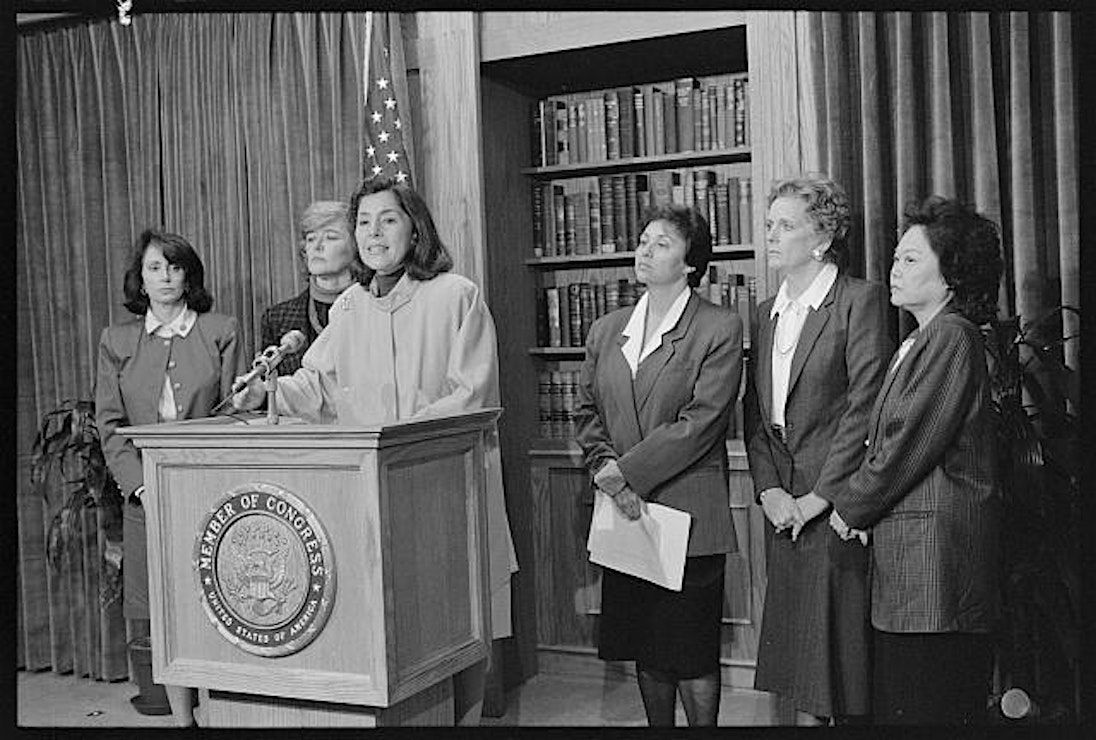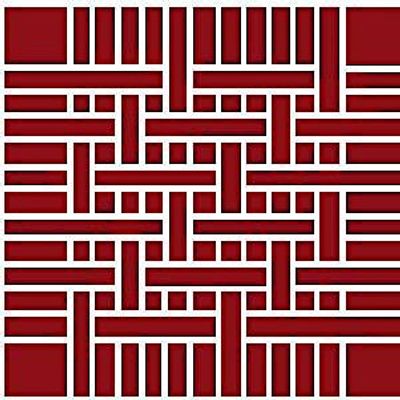The Evolution of a Political Uniform
Schedule
Sat Sep 21 2024 at 10:00 am to 11:15 am
Location
Koret Auditorium | San Francisco, CA

About this Event
The Evolution of a Political Uniform
with Talia Spielholz, the Assistant Curator of Costume and Textile Arts at the Fine Arts Museums of San Francisco.
In-person and online presentation via Zoom from the Koret Auditorium at the de Young Museum in San Francisco. Tickets for the in-person presentation are sold at the auditorium doors for $5.
Register for the Zoom presentation.
A recording will be available for 14 days following the talk.
This talk derives from Talia's graduate master’s thesis, which looked into what United States congresswomen have worn in official settings over the last several decades. Using the Congressional Pictorial Directory, a publication of the Government Printing Office that acts as a visual guide to each seated Congress, I looked to track the development and evolution of a recognizable political uniform worn by U.S. congresswomen starting in 1977 through today. To create a framework for understanding the sartorial history of American female politicians, I looked at and analyzed different portraits—official and unofficial—as well as other forms of visual media coverage of different female politicians over time. In doing this, I tried to understand the sartorial mode of a congresswoman and how that “uniform” might be used in different ways to communicate power and subvert various identities.
During the first half of the twentieth century, since the first woman was elected to Congress in 1917, curated press images of female politicians were used in newspapers and other publications as a means to make the American public more comfortable with idea of women in positions of power. Early versions of these images, often collaborations between the candidates and photographers, depicted female political candidates engaging in traditionally feminine activities such as homemaking, mothering, and putting on makeup. Through specific sartorial styling, modern press depictions and portraits of congresswomen continue to reveal individual personalities and further evolve the image of a women in politics. Today, our ideas about how a congresswoman should look stem from what we think if as typical professional dress. Power dressing modes drawn from menswear and preppy style contributed to these developing standards of professional dress during the 1970s, 80s, and 90s. The ideologies of the Second and Third wave feminist movements of the 1970s and 1990s also influenced women’s professional dress as ideas about the role of women in the workplace volved. Generally, skirt suits and pantsuits, grafted from men’s professional dress, in contemporary silhouettes, worn over plain blouses, were the basis of this professional uniform. While the general format of this uniform has remained relatively unchanged, recently, there have been modifications and exaggerations made to it by individual women in Congress as the political landscape of the country changes and as a greater range of identities are represented in Congress. To gain a better understanding around the perception of women in positions of power and dress styles overall during these decades, I looked at newspaper articles, magazine spreads, and dress guides from the late 1970s through the early 1990s.
Talia Spielholz is the Assistant Curator of Costume and Textile Arts at the Fine Arts Museums of San Francisco. She has been with the Museums since March of 2023 and in her current role since January 2024. She has an MA in Costume Studies from New York University and a BFA in Jewelry and Metalsmithing from the Rhode Island School of Design.

Image from the Library of Congress
Title: Representatives Nancy Pelosi, Patricia Schroeder, Barbara Boxer, Nita Lowey, Marilyn Lloyd, and Patsy Mink at a press conference on the President's veto of civil rights legislation
Creator: Jenkins, R. Michael, photographer
Date Created/Published: 23 Oct. 1990
Learn more about the Textile Arts Council.
Where is it happening?
Koret Auditorium, deYoung Museum, San Francisco, United StatesEvent Location & Nearby Stays:
USD 7.18 to USD 17.85
